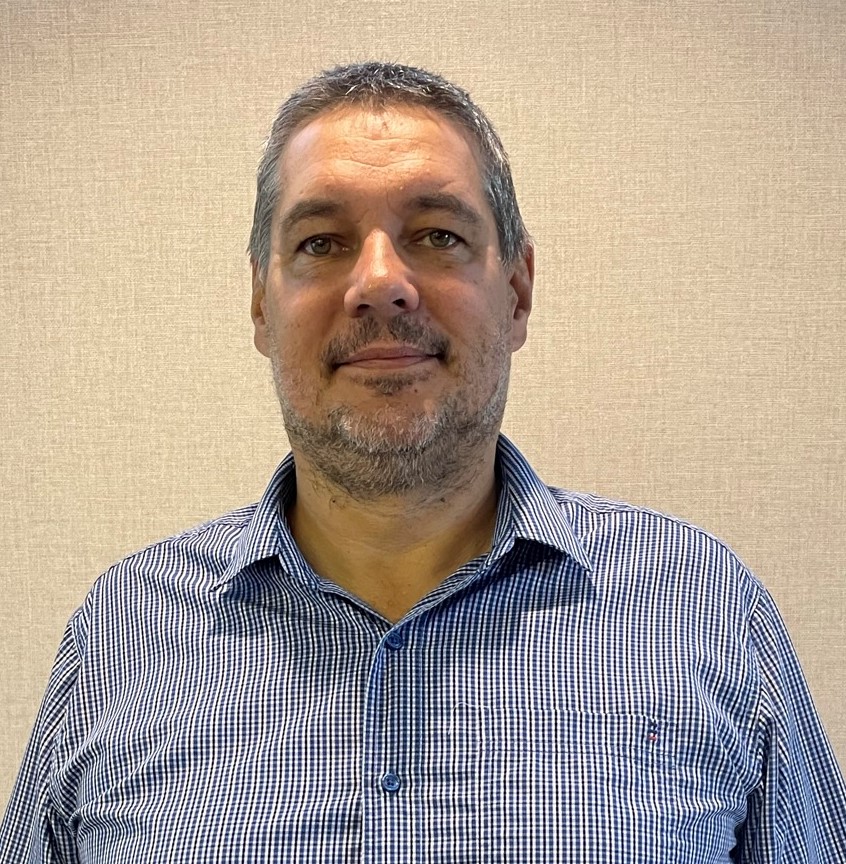Geotechnical Engineering for Open Pit Design and Operations Seminar Abstracts
Please see following the received abstracts from presenters for this seminar:

Maximiliano Adrove
Principal Geotechnical Strategic Planning
MMG Limited, Peru
The early stages of geotechnical studies for open pit design focus on key features such as rock mass characteristics, geology, structural controls, alteration, hydrogeology (Stacey & Read, 2009, Table 8.1) and, in some cases, mine equipment characteristics. At this level, information is sourced from scattered outcrops, geological maps and scarce drilling information either from resource exploration or early geotechnical drillholes. These sources, in most cases, are developed by specialists with different objectives, such as resource delineation or environmental permitting. These investigations focus on aspects or specific sectors of the mineral deposit leaving others with a coarser definition. During the project definition and pit optimisation process, other aspects become better defined once mining has progressed and some cuts have been developed; among them the validation of initial geological, structural and hydrogeological models and the predicted failure mechanism or slope performance are crucial data sources to process.
In the case of geological model, frequently the highest confidence level exists just around the mineralised zone and the lowest level of detail exists in the waste lithologies where most of the pit wall will be developed. Similar issues often arise with the hydrogeological model which frequently is based on the same density of information. For the structural model, initial analysis is based on drillhole data which tends to be conservative as the definition of features like persistence, rock bridge geometry and joint set interaction is difficult to estimate without face mapping. Therefore, detailed gap analyses are key to identify areas for model improvement and to design investigation programs to reduce model uncertainty and improve the predictability of the pit behaviour. In time, this allows us to perform sensitivity analyses on depressurisation or blast disturbance controls to produce the best options for pit optimisation.
An important aspect of the sensitivity analysis is to correctly frame the operational capacity to deliver the targets required in line with the mine plan. This paper considers a large open pit with a final design depth of 1,000 m and a width of 2,600 m with an original 25 year mine life using 15–30 m high benches with the use of large drill rigs of 8” to 12” drillhole diameter. The optimal design will be a product of the rock mass characteristics and the operational capacity to control slope damage and implement depressurisation. This paper shares the learning experience, gap identification process, 3D model development and sensitivity analyses carried out to optimise a large copper open pit mine in faulted and folded limestone within the central Andes, Peru.

Sharla Coetsee
Group Geotechnical Engineer
Reutech Mining, South Africa
Sharla is a qualified geologist who has focused on the field of engineering geology since 2009. Her involvement in mining projects has included early phase geological exploration as well as concept level to full design and construction for open pit mines. She has also provided specialist geotechnical and monitoring services for both open pit and underground operations. Sharla is now focusing on radar applications for pit slope monitoring.
Data collected by ground-based radars (GBR) pertains to movement data which provides information that illustrates the behaviour of the pit slope. This information can be utilised to manage both primary/strategic and safety critical/tactical monitoring campaigns as well as provide feedback to the slope design process through design performance assessment and calibration.
In order to utilise this data and the interpreted information, qualification and quantification of the quality of the data is required to ensure that it is accurate and representative of the pit slope condition. The atmospheric contribution in terms of the refractive index (RI) which is removed from the measured electromagnetic phase, and signal contamination which may result in compromised synthetic maps and trend plots needs to be understood.
There will be a focus on data–viewing practices and what causes poor radar data (such as system constraints, RI removal, phase ambiguity and vector loss of movement). In addition to the movement data illustrated by these systems, synthetic map information pertaining to the signal quality (amplitude), point or target measurement quality (cumulative flags and confidence) may also be used to interpret the pit slope condition. This information, especially leading up to the cracking and dislocation stage into collapse, provides an indication of the quality of the movement data being illustrated, in that if the measurement technique is compromised, so will the calculated movement component illustrated by the software in use.
Electromagnetic waveform contaminants will be illustrated by means of example in order to allow for future identification of these artifacts. Monitoring through support or mesh, vegetation and blast spill material on the pit slope may mean that the specific region creation (database management) and electromagnetic waveform housekeeping needs to be employed. Monitoring with these circumstances typically introduces noise (distorted data which is known to be inaccurate) to the synthetic maps, causes false alarms, and compromises the data quality for that portion of the pit slope. It is imperative that false alarms are mitigated and only alarms that represent the true movement profile of the pit slope are generated. Tips will be given on how to assess alarm alerts and interpret them accordingly.
This presentation will focus on a comparison of ‘good’ versus ‘poor’ data in terms of atmospheric and signal contamination of the data and will describe how these effects are illustrated and then mitigated (where possible) through a qualification and quantification checklist and set of techniques. Whilst the data illustrated may be applicable to Reutech Mining Systems, the theory and techniques presented can be adapted to be utilised for use by radar service provider users.

Dr Will Darlington
Principal Geotechnical Engineer
Grange Resources
As principal geotechnical engineer for Grange Resources, Will leads the geotechnical team at the Savage River magnetite mine in Tasmania, Australia. He’s a PhD-qualified engineer focused on open pit mining and enjoys the technical and practical challenge of developing mines from desktop study level through to production.
The Savage River mine has been operating for over 50 years. As the open pits reach their economic life and the operation pivots to underground mining methods, the opportunity to backfill exhausted pits has been utilised to facilitate better closure outcomes, short haul opportunities and increased dump capacity without the need for additional vegetation clearing.
The backfill of exhausted pits with mine waste rock can provide economic benefits in terms of short haul opportunities and environmental benefits through stabilisation of pit slopes and/or containment of mine waste. From a geotechnical perspective, backfill dumps can create challenges in the form of high tip-heads, dumping into water and dealing with legacy hazards inherent in the existing pit slopes. This presentation describes a case study involving all the forementioned challenges. The concept-to-operation process involved assessment of multiple scheduling and tip-head arrangements, the associated design work, waste material strength classification, risk assessments, monitoring, and operational considerations. A high reliance on emerging technology in the form of remote dozers and 3D limit equilibrium methods made the project both safe and productive.

Ian de Bruyn
Principal Consultant
SRK Consulting
Ian has 26 years’ experience over a wide range of geotechnical engineering projects from feasibility studies through to operational support and due diligence studies. Ian originally hails from Durban in South Africa, and left his beloved homeland 20 years ago on a whim for the huge spaces of Western Australia. He hasn’t yet managed to escape its gravitational field.
Ian’s main expertise is in geotechnical investigation and design of slopes for open pit mining operations. He has worked on projects involving very large pits in challenging rock mass conditions in the jungles of New Guinea, the savannahs of Africa, the deserts of Australia and the mountains of South America.
Ian is currently a principal and team leader of the SRK geotechnical group in Australia.
Any geotechnical open pit slope design is dependent on the geotechnical model developed for the design assessments. It is rare that design is not sensitive to the representation of the geotechnical conditions. The nature of the model is strongly dictated by the type, density, and spatial distribution of the information available but must also be developed to facilitate the purpose for which the model is constructed. A geotechnical model for an open pit must allow for the generation of slope design parameters that are most appropriate for the geotechnical environment, taking into account the dominant mode(s) of failure, the level of confidence in the data and acceptable levels of risk. It may require a significant amount of evaluation, interpretation and judgement to develop a model that is fit for purpose. In most cases, an unsuitable geotechnical model will result in a sub-optimal design outcome or a greater risk of instability than is intended.
The presentation will discuss the conception and development of appropriate geotechnical models for slope design. It will consider the types of information available, the level of study, controlling failure mechanisms and uncertainties, and will discuss how a model can be spatially defined and how the data can be best used to characterise each zone. The lithology, alteration, structural and hydrogeology models, and the likely slope failure mechanisms are important in selecting appropriate software or analysis methods that should be employed for slope design analyses. In this context, typical pitfalls in geotechnical models will be examined.
Key topics that will be covered include:
- The nature of the geotechnical models, including:
- A means of delineating the boundaries of the domains/sectors; these could include 3D surfaces or solids or a 3D block model.
- Key parameters for each domain/sector/cell that are required to fulfil the purpose of the models.
- A means of identifying the spatial variation within the domains, by means of:
- statistical distributions identified for each domain
- explicit inputs generated in a probabilistic manner (using statistics)
- automated extrapolation of values from spatial investigation data into a grid (as for a block model).
- The purpose of geotechnical models:
- An appropriate tool to use in evaluations/stability analyses for optimisation of mine design:
- The model will need to be developed in order to be suitable for use in the analysis methodology/software that will be used, so this should at least be considered at the outset.
- A basis for identifying the likelihood of different slope failure mechanisms around a pit.
- A basis for a hydro-geotechnical model (a model of pore pressure distributions in the near-pit environment, to be used as input for stability analyses).
- A basis for drill and blast assessment and design.
- A basis for hazard and risk identification.
- A basis for operation slope management and monitoring programs.
- Types of geotechnical models:
- domain models
- block models.
- Consideration of 2D and 3D models.
- Construction of geotechnical models:
- Inclusion of geology.
- Key geotechnical properties.
- Inclusion of structure.
- Inclusion of groundwater.
- Data variability.
- Progressive model development.
- Application and appropriate representation in slope stability modelling.
- Common problems and pitfalls.

Dr Neal Harries
Director, Mine Monitoring – APAC
Hexagon
Neal has worked in the mining industry for over 24 years, working as a consultant engineer with Golder Associates, as well as roles in research organisations focused on rock mechanics or slope stability. He has a BSc (Hons) in Geology from Cardiff University, Wales and a PhD in Mining Engineering from The University of Queensland (Rock Mechanics). His areas of specialisation have been in open pit rock mechanics, mine monitoring and risk management. As director of Hexagon Mine Monitoring, Neal manages P&L, service and support of the mine monitoring business in the Asia Pacific region, and has a special interest in mentoring geotechnical engineers in the business.
Assessing and managing instability hazards is an essential activity when working with both unstable natural slopes and excavated open pit mining slopes. Slope monitoring has become one of the standard techniques for management of these geotechnical risks associated with mine slope instability hazards. In the last few decades, a proliferation of new monitoring techniques such as terrestrial radar, satellite InSAR, LiDAR and micro-seismic array have become standard operational tools to add to more traditional, existing survey-based monitoring options. Practical benefits to operational safety can be achieved by using a total monitoring approach based on the use of multiple technologies, which results in improved risk-management outcomes and reduced cost to the operation over the life-of-mine.
The second part of the presentation explores risk-management of slope instability hazards in open pit mines using guidelines from the Australian Standard (AS ISO 31000:2018). Using some practical examples from open pit mines over the last 20 years, a focus on the evaluation and treatment of slope instability hazards will be discussed. This has a significant input into improving the operational safety of a mine. The final part of the presentation will examine the important concept of residual risk, which will always be present to the mine owner, regardless of how comprehensive a monitoring program is maintained.

Wouter Hartman
Senior Principal – Geotechnical Engineer
Cartledge – Mining & Geotechnics
Wouter has over 34 years’ industry experience of which 30 of those years have been related to geotechnical/rock engineering. Wouter has a particular focus around operational and consulting activities related to geotechnical/rock mechanics guidance for underground and open pit mining/waste dumps, water dams and tailings storage facilities in Indonesia, Canada, Australia, New Zealand, South Africa, India, Vietnam, China, Chile, UAE, Oman. Wouter has broad exposure to a range of mining and civil related projects and operations with experience in the following commodities: dold, copper, nickel, lead/zinc, platinum, and brown and black coal.
His mining and civil geotechnical experience is coupled with project management of many small to large projects. Wouter has been involved with geotechnical corporate governance and driving change to management plans (GCMPs, WMP, HLMP, TSFMPs) to be more risk-based with an emphasis around critical controls and trigger action response plans.
Wouter’s extensive experience in risk management, monitoring and failure/damage assessment, ground control design and stability assessments for various mining and civil projects and being an expert witness has provided an insight into various process and management system failures.
Wouter Hartman & Peter Saunders
Part 1: corporate risk management in practice – the prevention of a catastrophic outcome
After more than 30 years of exposure to geotechnical and hydro risk, experience with corporate risk management frameworks and their underlying documentations (e.g. geotechnical and tailings storage facility critical risk standards and regular site risk register reviews) is mixed. The reason for this view is that the level of geotechnical risk management awareness, application and accountability for various organisations ranges from good to extremely poor. The underlying effect may very well be due to a range of factors including misaligned corporate goals.
The common causes of and factors contributing to these incidents have been identified:
- Inadequate ground-related hazard awareness for greenfield exploration, mining areas (e.g. open pit, underground), heap leach operation, ponds, water dams or tailings storage facilities.
- Geological and mining teams’ lack of understanding of the specific risk environment (e.g. steep topography for exploration programs, open pit geotechnical hazards, underground mining geotechnical hazards, heap leach operations and above-ground embankment dams).
- Failing to conduct proper geotechnical–hydro inspections and investigations.
- Inadequate geotechnical assessments, analysis and designs.
- Inadequate communication of the design, mine plan or infrastructure plan.
- Inadequate implementation of the design, mine plan or infrastructure plan.
- Inadequate quality control or quality assurance for geotechnical–hydro processes.
- Lessons from previous incidents and failures not incorporated within the risk management strategy.
- Inadequate ground-awareness training.
- A lack in experienced geotechnical–hydro engineers and/or supervisors.
A regular (e.g. quarterly) site geotechnical risk register review will ensure an overview of the existing controls that are in play, and additional mitigating controls identified and listed for action and implementation to prevent a catastrophic outcome. The importance of real-time monitoring cannot be over emphasised. The case study will provide some insight into a timeline of the prevention of a catastrophic outcome.
Part 2: corporate risk management in practice – the role of real-time monitoring
By integrating short-term, safety-critical monitoring with terrestrial radar, and long-term, strategic monitoring using sensors like prisms, GNSS, InSAR data and other technologies, geotechnical engineers can apply a more holistic approach to traditional monitoring methodologies.
Long-term data must be monitored in real time, maintained, cleansed and ready for numerical modelling applications. Geotechnical data acquisition represents a significant investment. Valuable datasets are often partially or even completely discarded due to poor data maintenance.
An effective trigger action response plan must apply realistic alarm trigger thresholds based on continuous, real-time trend analysis of displacement, subsidence, pore pressure and other metrics. Correlation between different monitoring sensors is critical for trigger validation to increase confidence in what may or may not be an appropriate operational response.
Reliance on fixed deformation or velocity magnitudes introduces uncertainty, is unreliable and more often than not leads to unwanted/false alarms at an exponentially higher rate than valid ones, leading to costly operational inefficiency and reduced confidence.

Christian Holland
Senior Manager: Geotechnical Support Operations
AngloGold Ashanti
Christian has a bachelor of science in geology from James Cook University and a master’s in rock mechanics from the University of New South Wales. He has worked in the mining industry for almost 30 years, initially as a mine geologist before switching to geotechnical engineering for the last 22 years.
The switch to geotechnical engineering has seen him work with culturally diverse teams at underground and open pit mining operations across Australia, Southeast Asia, South America and Africa in technical support, coaching, due diligence, research and development, and governance roles. He has a particular interest in using readily available data (data in plain sight) to provide practical geotechnical insights into rock mass response to mining. Christian is currently the senior manager: geotechnical support operations at AngloGold Ashanti with the African business unit.
Abstract: Dealing with a pit instability in saprolite- a case study

Bruce Hutchison
Director
BJH Geotechnical Services
Bruce has 43 years of experience in the civil and mining engineering industries. His civil experience was gained in Canada, China, the Philippines and Australia where he specialised in hydro-electrical and tunnelling investigations and construction. In the mining industry, Bruce has been involved in open pit production specialising in the geotechnical fields of slope stability, slope monitoring and mine planning, and in civil engineering related projects such as tailings dams, river crossings and haul roads. He has been involved with acid mine drainage rehabilitation and dump designs. Bruce was the senior geotechnical/principal engineer at Grange Resources’ Savage River mine for 15 years before joining Hillgrove Resources in April 2014. His mining career has also involved operations and consulting on mining projects in Western Australia, Queensland and Mongolia.

Dr Arturo Maldonado
Superintendent Geotechnical Engineer
BHP
Arturo is originally from Peru and moved to Australia in 2007. He studied engineering geology in Peru and got masters in structural geology in Brazil. He has worked for BHP in different commodities since 2000 (copper, nickel and iron ore) and worked for RioTinto briefly in iron ore during 2010. His experience covers development of standards and procedures, slope monitoring optimisation, ground support design, slope remediation work, site investigation programs, database administration, data analysis, numerical modelling, slope stability optimisation, auditing and risk assessments. Arturo obtained his PhD from The University of Western Australia in rock mechanics, with focus on shear strength of shale defects in the Pilbara.
This paper describes three fundamental topics used for slope design: the design acceptance criteria (DAC), the model confidence, and the pit optimisation approach based on sensitivity analysis. It is well known that the DAC definitions could vary across different commodities, in response to both geological and geotechnical settings; therefore, this paper only presents the DAC as being defined and used for assessing optimal slope design at pre-feasibility and feasibility level for iron ore deposits within BHP Iron Ore properties.
This paper explains how the geological setting of iron ore has been taken into consideration to shape the definitions of model confidence, implementing a semi-quantitative approach based on experience and slope sensitivity analysis to permit a relationship between model confidence to slope stability, and then enabling the construction of a ‘DAC matrix’ that relates model confidence to slope failure consequence (i.e. economic impact).
The application of both model confidence and DAC in practical cases is a routine exercise in concurrent pre-feasibility and feasibility studies since later 2021. This document concludes by presenting some of the economic benefits that have enabled better model confidence at feasibility level.

Jessica Morgan
Country Manager – Australia & New Zealand
TRE-Altamira Inc
Jessica has more than 13 years of experience as a specialist in the field of InSAR, with roles in technical data analysis, research, project supervision and business development. She has spent the last five years focused on the application of InSAR technology for asset monitoring and risk management within the mining sector, particularly on open pits and tailings storage facilities. She has a master’s degree in remote sensing specialising in the processing and interpretation of satellite data for natural resource monitoring and management. As country manager of Australia for TRE Altamira, Jessica oversees all InSAR projects not only in the mining sector, but also civil engineering, energy and natural hazards.
The use of satellite imagery techniques to assist in slope stability monitoring has experienced an increased uptake in the mining industry in recent years. Of particular relevance is the use of interferometric synthetic aperture radar (InSAR) technology, which has been found to be a highly effective tool for assisting in the identification and monitoring of geohazards, which is an essential aspect of risk management. The main role of InSAR lies primarily as a longer-term strategic monitoring tool, which is especially important for assisting with operational safety and continuity. This presentation will provide a framework for the use of InSAR over mine sites with a particular focus on slope monitoring and risk management for both open pits and features such as rock dumps/waste piles.
Several case studies will be discussed throughout the presentation which will showcase the use of InSAR to assist in slope stability monitoring over a variety of assets to address a range of monitoring objectives/needs. These real-life examples will be used to provide an overview of the technical advantages and limitations of this technology, specifically for slope monitoring. A rundown of the most commonly asked questions by geotechnical engineers pertaining to the use of InSAR within a slope monitoring context will also be reviewed to better assist in the understanding of the role this technology plays in mine and risk management. Finally, the continuous and ongoing improvements in radar satellite resolutions and InSAR processing algorithms will be covered to illustrate the positive developments of this technology to provide more comprehensive overviews of geotechnical hazards and site conditions.

Ignatius Putra
Regional Geotechnical Lead – Australia, Asia and Africa
GroundProbe, Indonesia
Ega commenced his career as a geotechnical engineer in 2008, specialising in open-cut geotechnical engineering in Indonesia and overseas. His work has spanned a wide range of commodities and diverse geotechnical challenges. As of September 2021, Ega has been serving as the regional geotechnical lead at GroundProbe where he oversees all geotechnical advisory services including product development, sales support, customer training and academic research across Australia, the Pacific, Asia, and Africa regions.
Slope stability is crucial for open pit mining operations since slope failure and rockfalls pose major risks to safety, operations and finances. To deal with this issue, wire mesh is frequently installed on unstable slopes to reduce the risk of rockfalls and slope failure by offering structural reinforcement and containing loose debris combined with advanced monitoring tools such as the interferometry ground-based radar which is widely known for its role in monitoring critical slopes.
This case study focuses on slope monitoring data collected by GroundProbe’s 2D real aperture radar (SSR-FX) at an iron ore mine in Western Australia. Showing the presence of wire mesh on the mine walls affects radar data, resulting in distinct repetitive patterns known as diurnal deformation trends. These patterns mostly appear in deformation graphs when the slope movement rate is slower. Effective monitoring and alarming strategies are required, with the utilisation of short-term and long-term deformation analyses, and a focus on the consistency of peak and trough occurrences in order to detect slope instabilities at an early stage.
While the application of wire mesh could increase slope stability, a deep understanding of the behaviour of radar data collected is essential for improving the monitoring campaign and ensuring precise evaluations of slope performance.

Didy Ramli
Senior Geotechnical Engineer
Mining One
Phu Bia Mining’s (PBM) Phu Kham gold and copper mine in the Lao People’s Democratic Republic (Laos) has been operating since 2008 and has reached a mature stage of operation. An open pit approximately 2.2 by 1.2 km has been developed, with excavated slopes up to 560 m high in mountainous terrain. The deposit is a copper–gold porphyry system with mineralisation present in skarn, stockwork and disseminated styles. Intense tectonism has resulted in a complex structural setting, with numerous faults adding to the geotechnical challenges of mining in a tropical high-rainfall environment. The complex faulting prompted PBM to engage a specialist structural geologist to undertake mapping and produce a detailed structural model in Leapfrog software which had developed in detail and complexity over several years.
Faults that are of interest to structural geology are not always geotechnically significant. It was recognised that the structural geology model was overly complex and relied upon a specialist consultant to continue to update and manage on a campaign basis. The rapidly evolving mining environment required that site geotechnical personnel are able to identify, characterise and model geotechnically critical faults. A process was developed to accomplish this, using the established model as a basis. This provided the PBM geotechnical team with autonomy and improved their capability in managing geotechnical risks associated with mining operations.
The primary goal was to ensure that stability assessments were conducted based on actual ground conditions and critical faults. This transition provided mining operations with a well-informed understanding of key structural risks in advance, allowing for better planning and risk mitigation as mining progressed in each pit.
The process involved three steps. The first was to establish a standardised critical fault characterisation process to ensure consistency in fault identification, analysis, assessment of risks, and mitigation strategies. A database was established recording critical faults and their characteristics for each mining area, using the structural model as a basis and supported by ongoing mapping.
The second stage involved a standardisation of the fault-modelling process. This involved creating a step-by-step procedure to be uniformly applied, which also served as a training tool for mappers and geotechnical engineers. This ensured that all team members were equipped with the necessary skills to accurately model geotechnical faults, leading to improved consistency and reliability in fault data.
The third stage was to establish and maintain a database of critical faults confirmed through geotechnical drilling, historical failure, and in-pit and photogrammetry mapping. This database became an essential resource for providing a comprehensive record of geotechnical structures critical to pit stability, and ensured that critical faults were continuously monitored and updated, allowing for proactive management of geotechnical risks.
By combining these data elements, it was possible to produce a more simplified, fit-for-purpose fault network model in Leapfrog, specifically focused on geotechnically critical faults. It empowered site geotechnical personnel to manage and update the database to enhance the accuracy and reliability of geotechnical assessments, leading to safer and more efficient mining operations.

Alexander Rogan
Principal
PSM
Effective management of surface water can be an important aspect of open pit mining and slope design, be it through control or diversion of concentrated flows to mitigate flooding or erosion risks or in reducing infiltration into the slopes to help locally reduce recharge to the groundwater system and pore pressure development. In more –arid climates, such as Western Australia, flows are typically ephemeral, with surface water water risks mainly associated with extreme rainfall events, such as a cyclone, with surface water controls required to be in place to manage impacts at the time of the event. Whereas in higher rainfall climates, such as the highlands of Papua New Guinea (PNG), which can experience 10 m of rainfall a year, management of surface surface waterwater risks is more critical for day –to –day mining and must be considered as a significant component in the slope design process. Examples from the Ok Tedi mine in the PNG highlands are presented.
It is not uncommon for a mine to be in a location with little to no existing streamflow measurements, and the catchments that could affect the mine can be large, such that gaining insight into historical events or installing an effective monitoring network to capture data for future events can be very challenging. A number of emerging technologies can significantly aid these challenges, ultimately allowing design uncertainty to be reduced.
The Rainfields3 dataset set post-processes all of the Australian Bureau of MeteorologyBOM rainfall radar observations to create a gridded 15 minute rainfall dataset across catchments within the field of view of the radar. This allows rainfall data gaps to be infilled, which can be critical in reducing uncertainties in the analysis of historic events.
Velocimetry methods are the most recently released approach within the National Industry industry Guidelines guidelines for hydrometric monitoring (NI GL 100.11). The approach post-processes video images captured of water flow to estimate the flow velocity, which,, in conjunction with a surveyed cross-section, can be used to integrate the total flow. Data collection can be done via a drone or fixed trail cameras, which can offer a cheap and effective way to capture data during a runoff event.
Discharge of water to the natural environment requires an understanding of its impactss, including to the surface water environment. If there is no historic data available for the natural environment, such as a salt lake playa, then assessment of potential impacts can be very challenging. However, multiband satellite images, collected by the Landsat, Sentinel and Planetscope satellites, can be used to create at least a 20 year dataset of water levels in a water body, allowing calibration of a water balance. It can also be used in operational settings for mine dams or pit lake filling, where a water level logger may not have been deployed, with satellites typically recording one to three images every week in recent years.
Examples will be provided for the use of each of the above methods and application to common mining surface water problems.
The Newmont Boddington Gold (NBG) mine is located approximately 130 km south of Perth in Western Australia. The mine produces gold and copper by mining bulk tonnage from a large, disseminated orebody hosted within a massive andesite/diorite rock mass criss-crossed by sub-vertical and sub-horizontal dolerite dykes. Every year, NBG excavates and hauls over 90 Mt of rock from its open pit operations. Due largely to the quality and character of the rock mass, NBG is able to safely excavate steep pit walls with 36 m high benches and 15.2 m wide design berm widths. The inter-ramp angle is 60.8° and benches are blasted and excavated in three 12 m high flitches using a composite batter angle design such that top, middle and bottom flitches have batter angles of 75°, 90° and 90°, respectively.
This case study presents some of the key geotechnical challenges dealing with such a unique environment, including bench turnover process, complex structural geology and mining at greater depth.

Dr Michele Salvoni
Senior Project Geotechnical Engineer
Newmont Australia
The Newmont Boddington Gold (NBG) mine is located approximately 130 km south of Perth in Western Australia. The mine produces gold and copper by mining bulk tonnage from a large, disseminated orebody hosted within a massive andesite/diorite rock mass criss-crossed by sub-vertical and sub-horizontal dolerite dykes. Every year, NBG excavates and hauls over 90 Mt of rock from its open pit operations. Due largely to the quality and character of the rock mass, NBG is able to safely excavate steep pit walls with 36 m high benches and 15.2 m wide design berm widths. The inter-ramp angle is 60.8° and benches are blasted and excavated in three 12 m high flitches using a composite batter angle design such that top, middle and bottom flitches have batter angles of 75°, 90° and 90°, respectively.
This case study presents some of the key geotechnical challenges dealing with such a unique environment, including bench turnover process, complex structural geology and mining at greater depth.

Joe Seery
Director and Principal Geotechnical Engineer
Bastion Geotechnical Pty Ltd
Joe Seery graduated from the Curtin University – Western Australian School of Mines in 1996 with a Bachelor of Engineering (Honours) in Mineral Exploration and Mining Geology and subsequently completed a Masters of Engineering Science in Mining Geomechanics at the Curtin University Western Australian School of Mines in 2004. Joe has over 25 years of geotechnical and geological experience in a diverse range of underground and open cut mining operations and projects in commodities including iron ore, gold, lithium/tantalum and coal in both Australia and internationally in Brazil, Argentina, Colombia, Papua New Guinea, Mali, Ghana and Tanzania. In late 2019, Joe founded Bastion Geotechnical Pty Ltd. He has authored/co-authored a large number of technical reports, published 11 technical papers and presented at several international conferences. Joe’s expertise extends to the development and implementation of geotechnical data management systems and he has a keen interest in advancing efficiencies in the discipline through the use of developing technologies.
Geological professionals heavily rely on the observational method for the development of geotechnical models, including input models comprising geological, structural, rock mass and hydrogeological models. The foundation data is required to be reliable, appropriate to the phenomena being investigated whilst retaining the ability to address unfavourable or alternative scenarios and must attract prompt evaluation, analysis and actioning. This underpins the characterisation of uncertainties and associated levels of confidence in engineering judgements that rely on the data and drives the reasonable course of action for future investigations and observations.
The geotechnical data needs to be stored in a repository that affords instantaneous or retrospective validation, security, accessibility and connectivity to support reporting and data analysis for development of the geotechnical models. Traditional methods such as paper or spreadsheet-based methods are no longer the norm, with acceptance of database and cloud-based repositories in the current era. Interpretation is closely linked to aspects of storage, in the choice of software and the connectivity therewith. Key aspects of interpretation revolve around the identification and characterisation of patterns, similarities and differences. Foundational to everything is the key concept of spatial attributes; not only co-ordinate information but time as well. Interpretation requires the use of filtering, labelling, categorisation, and ability to summarise parameter components and their aggregate functions. An important perspective on interpretation is that geotechnical data is typically abstract data, existing as a thought or concept rather than a tangible object. Therefore, communication of the abstract concepts of our discipline requires close scrutiny of the meaning of elements of our work, and embedment into geotechnical models for the confirmation, or otherwise, by subsequent experience.

Daniel Strang
Principal Engineering Geologist
PSM
Open pit slope design often relies on a very limited window of data, usually a handful of boreholes, providing a hand-sized sample of rock and some lab testing. The geological model is inferred from other drilling – usually reverse circulation drilling and assay data that targets mineralisation. The geology of the non-grading ‘waste’ is usually low confidence, leaving geotechnical purposed boreholes to fill in the inferred gaps and develop a geotechnical model for slope design. During operations, the pit slope design is often only reviewed if there is a problem, such as a slope instability, or if a geotechnical review takes place.
Verification of the geotechnical model during excavation is critical to address assumptions such as:
Are the rock mass conditions observed at borehole-scale the same as those observed in the pit wall at multi-batter-scale?
Are the structural trends as anticipated, or are there new structural sets that weren’t identified?
Is the groundwater setting as predicted?
Unfortunately, the verification of the slope design is not undertaken routinely, nor adequately, on a large number of sites.
This presentation aims at highlighting the importance of pit slope design verification during mining to reduce the impacts of unexpected slope instability or to provide opportunity to optimise pit slopes – both of which aim to reduce risk and mining costs. Examples of different scenarios where either pit slope instability could have been avoided, or mining costs significantly reduced due to proper design verification, are presented. These examples cover a range of geological terrains, from Pilbara iron ore pits, to hard rock mines in the Yilgarn, and selected examples from Southeast Asia.

Diane Walker
Principal Consultant – Geotechnical Engineering
SRK Consulting
This topic will be covered using a what-why-how outline:
- What: describe structure types that are important for geotechnical design.
- Why: outline of failure modes impacting slope design.
- How:
- Data collection by mapping, structural logging and televiewer.
- Data interpretations and analysis.
The presentation will make good use of photographs, figures and stereonets to demonstrate concepts discussed.
Structure types
- Major features: faults, shears.
- Ubiquitous fabric: bedding, banding, schistosity.
- Minor features: joints (briefly outline typical joint set patterns).
- Cemented structures: strongly cemented not relevant for geotechnical design. Weakly cemented: understand if this is a structural or rock mass issue.
- Contacts: sometimes structure, sometimes not.
Outline of structural failure modes
- Planar (typically from fabric).
- Wedge (typically joints ± fabric; ± major).
- Toppling (typically from fabric or strong joint set).
How do we design for these:
- Planar and toppling: design batter face to minimise failure (i.e. ‘design out’ the failure mode).
- Design acceptance criteria: probability of failure.
- Wedge.
- Combination of batter face angle (mitigate wedge formation) and berm width (ensure catch capacity, assess crest loss due to wedge failure).
- Major features.
- These structures have the possibility of causing stack or overall slope-scale failure.
- Assess each separately (kinematic, in models).
- Model as explicit structures in slope models (Slide2/3, RS2/3, FLAC, UDEC).
- Avoid instability on major structures though overall slope design and timing of cutbacks.
Data collection: mapping
- Mapping from outcrop: assess sets; measure dip and dip direction, spacing, continuity, structure interaction.
Data collection: structural logging
Step 1: Drillhole planning:
- Plan holes to best intersect known fabric and faults. Plan holes in a variety of orientations to ensure all structural sets may be identified. For cutbacks in strong rock, plan holes drilled into wall to confirm absence of major structures.
Step 2: Core orientation:
- Core orientation tools – ACT most common.
- Assess confidence in orientation line: match adjacent runs.
- Example: lay out successive runs in v-rail, redraw orientation line by matching consecutive runs. Comments on using low reliability data.
Step 3: Measure alpha and beta:
- Brief description of different methods for beta angle measurement: sleeve, wrap round protractor, measuring tape.
- Also measure structure type, roughness, infill, weathering, alteration.
- Comments on data reliability, common issues.
Step 4: Convert alpha and beta to dip and dip direction:
- 3D visualisation programs do this (Leapfrog, Vulcan, GEM4D).
- Include hole survey. If the hole is deviating from planned survey, this is going to impact the calculated alpha and beta.
Data collection: televiewer
- Outline of acoustic and optical televiewer data.
- Advantages of televiewer over physical logging (greater confidence in structural readings, get data in weak/fragmented rock, time-effective and cost-effective).
- Disadvantage: no measurement of roughness, infill.
- Be aware of geological data versus geotechnical data picks: geology will focus on bedding and veins (or whatever is controlling mineralisation). Veins can be strongly cemented and have limited influence on geotechnical design. Geology: low/no requirement to measure joints.
- Measurement for geotech:
- Joints.
- Fabric (bedding).
- Faults and shears: measure orientation, thickness and zone of influence.
- Use calliper log to assess relative hardness.
- Data collection is developing looking at incorporating sonic velocity log to assess strength (relative or absolute).
Data interpretations and analysis
Basic descriptions of stereonets: how these are used as a 2D visualisation of 3D data, poles and planes.
Kinematic analysis in Rocscience software:
- Dips (data representation, set interpretation, kinematic analysis).
- Stereonet examples will be presented to demonstrate these three aspects.
- Swedge, Rocplane.
- Example will be presented showing how results are interpreted and used.
- RockSlope3.
- 3D: need spacing and continuity for meaningful analysis.
Points to remember:
- Plot and analyse fabric and joints separately (often bedding readings will completely outnumber joint readings, so joint sets will be more difficult to pick on contoured stereonets).
- Identification of joint sets: common issues.
- Be aware of drillhole bias (missing sets, some sets more represented than others, Terzaghi weightings useful but will only go so far).
- Be aware of dataset completeness when doing stereonet analysis.

James Watton
Principal
PSM
Direct shear laboratory testing of rock defect specimens is the accepted method of assessing the shear strength of discontinuities in rock. Typically, samples collected for direct shear testing should be representative of the controlling structures for structurally controlled slope instability at the relevant scales. However, due to the difficulty in collecting natural defect samples, intact samples are collected for direct shear tests whereby a ‘defect’ is cut through the intact rock for testing, termed ‘saw-cut’ samples.
Saw-cut tests are often thought by the industry to produce a consistent lower bound strength for defects, which are then inferred to be representative of the basic friction angle or (phi b) as an input for the various methodologies for assessing rock defect shear strengths. However, there are many examples that suggest this is not the case, and results from tests undertaken on saw-cut samples can be highly variable due to factors including the sample preparation and sample degradation during testing including the production of rock flour.
This presentation presents saw-cut direct shear data from several sites across Australia and Papua New Guinea which show that the shear strength from laboratory testing of saw-cuts is not consistent and can be highly variable. The causes of variability in the saw-cut test database is reviewed and results compared with direct shear testing of natural defects in the same rock mass. The results are shown to either underestimate or overestimate the shear strength depending on the rock type tested. This can have significant implications for open pit slope design and stability in structurally controlled settings.
This presentation shows that, in specific geological settings, the results from direct shear testing of saw-cut samples are typically not representative of the discontinuity shear strength, and that careful sampling and testing of natural defects is more appropriate.

Dr Felicia Weir
Director & Principal Engineering Geologist
PSM
The engineering geology at every site has developed through complex interactions of geological processes over vast periods of time. The inherent variability between these processes and sites poses challenges in developing suitable slope designs due to both limited data and understanding, leading to uncertainty and associated risks.
A robust engineering geology model serves as a valuable tool for effective risk management by providing insights into anticipated ground conditions. The presentation examines the three primary geological environments – sedimentary, igneous and metamorphic – and explores the geological features that typically influence slope design within each environment. Global case studies from various mine sites illustrate the impact of these controls. A series of case studies will also be used to highlight the possible consequences when the model isn’t appropriate.
In summary, the presentation will examine the diverse geological environments, case studies and a systematic approach to the geotechnical model. The findings and guidelines presented are aimed at providing valuable insights for professionals involved in slope design, enabling them to make informed decisions and enhance safety.
Rockfall is a key focus for geotechnical risk management and operational safety in the current mining environment. Due to limited site records and variability in rockfall conditions and outcomes, risk assessments are ideally completed by experienced practitioners who can make sound judgement calls. In reality, the assessments are often undertaken by site staff who are junior or inexperienced. This may result in a site operating at a higher than acceptable risk level due to rockfall.
This presentation reviews the rockfall field trials undertaken for a case study site and development of a qualitative rockfall hazard screening tool for that site. The tool is intended to be a quick and easy method, to assist staff in making important judgement calls about rockfall hazard in the field. Applications for this tool include routine slope geotechnical hazard assessments in active working areas, providing semiqualitative hazard information for risk assessments and generating rockfall hazard maps for communication to site staff.
A quantitative rockfall approach has also been developed for the case study site for appropriate risk assessments. The method and key inputs to the quantitative approach will also be presented.
